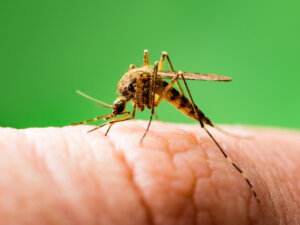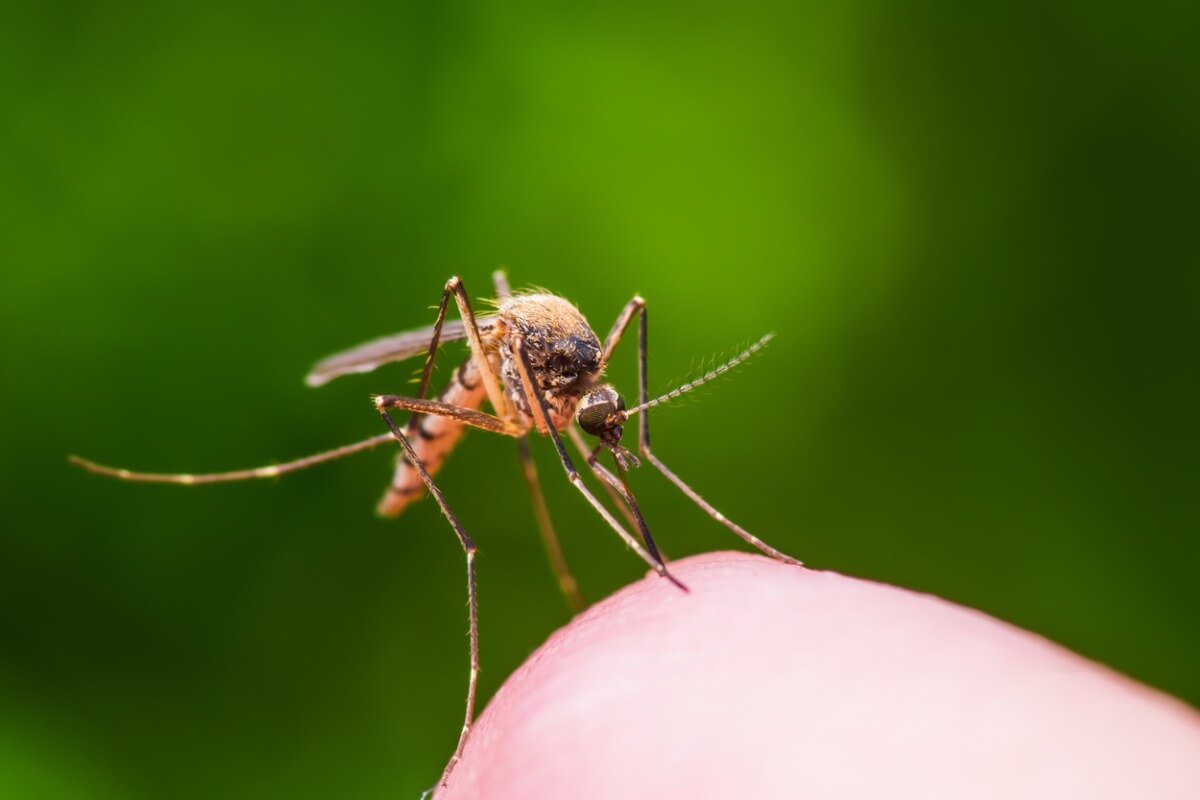Risks and Benefits of Genetically Modified Mosquitoes


Written and verified by the biologist Georgelin Espinoza Medina
Vector-borne diseases are a major headache worldwide. Especially in tropical and subtropical regions, where the highest incidences are found. There’s an urgent need for options that allow better control and eradication of all these diseases. One such option is the use of genetically modified mosquitoes.
However, as with everything new, there’s some fear and skepticism about their use. For this reason, the World Health Organization (WHO) has come forward to clarify aspects related to the use of these transgenic or modified mosquitoes. This is the subject we’ll be talking about here so we invite you to keep reading and find out more about the subject.
What are genetically modified mosquitoes?

As their name indicates, they’re mosquitoes that have been altered in terms of their genetics, that is, in their DNA (the molecule that contains all a living being’s information). To achieve this, a technology called recombinant DNA is used, in which a segment or gene is used that possesses a characteristic that is to be transmitted to the recipient organism, in this case, mosquitoes. Another name for these mosquitoes are transgenic mosquitoes.
This innovative technique has been used in various animals, even in specimens intended for human consumption.
Why are transgenic mosquitoes used?
You may think the use of modified mosquitoes is absurd. However, the idea arises from a great need in public health. Humans have long been the victim of numerous pathogens, which can be found everywhere, and can be moved from one place to another by species that function as vectors or transmitting animals.
Vectors are very varied and include mosquitoes, flies, mites, ticks, lice, and snails, among others. In the particular case of mosquitoes, they can transmit certain diseases. These include dengue fever, yellow fever, malaria, filariasis, chikungunya and West Nile fever. All of them have a great impact on the population.
To give an example of the problem, in 2018, there were about 228 million cases of malaria in the world, with a tragic figure of 405 thousand deaths. Data that show the lack of control with the use of current techniques, and demonstrate the need to seek alternatives for the eradication of these vectors – insects that have expanded their territory in recent years, which increases the problem.
Because of this, the initiative arose to use genetically modified mosquitoes to combat malaria and the various diseases they can transmit.
What qualities do the mosquitoes produced by biotechnology have?
The idea of generating modified mosquitoes is to combat diseases. Because of this, they must possess some characteristics that contribute in some way to this practical purpose. In the case of the Aedes aegypti species (a transmitter of dengue, Zika and chikungunya), a self-limiting gene has been used that makes them die before they reach adulthood. In this way, the populations of these insects are reduced.
Other marker genes that allow the identification of transgenic mosquitoes are also used. In particular, with fluorescent capabilities, so that they can be detected under special light. Thus, they can be differentiated from wild species and the modified organisms can be tracked.
What are the risks and advantages of genetically modified mosquitoes?
The idea of transgenic mosquitoes is controversial among researchers. Some support their implementation, but others oppose them, arguing that the risks outweigh the benefits.
If this tool proves successful, it would undoubtedly bring enormous advantages regarding the prevalence of vector-associated diseases. Diseases that decrease when the chain of contagion is broken, when transmitting mosquitoes are reduced in nature. The risks to be evaluated with this type of tool are related to environmental safety, biodiversity, and health, both human and animal.
One of the main companies dedicated to the production of these transgenics is Oxitec. Some studies carried out in places such as Panama, Brazil, and the Cayman Islands have determined that GMOs don’t have a significant impact on humans, the environment, other mosquito species, or even animal predators. In addition, they show a reduction in wild populations of these insects.
However, research is still ongoing. WHO endorses the need for evaluation through a stepwise approach and with the participation of communities to ensure safety, quality, and efficacy.
Conclusions

Due to the global incidence of vector-borne diseases, WHO has made statements regarding the urgency of developing and testing tools that contribute to their control and eradication. One of the technologies implemented in recent years is the use of genetically modified mosquitoes. Because of this, they have stressed the importance of a gradual approach to testing them.
This vision needs to be able to involve the different communities, including indigenous populations. After the struggles in this colossal task, using different methodologies over the years, and without success, we need to put skepticism to one side and take an objective look at the existing options. All provided, of course, that the results will guarantee the effectiveness, health, and safety of humans, animals, and ecosystems.
Vector-borne diseases are a major headache worldwide. Especially in tropical and subtropical regions, where the highest incidences are found. There’s an urgent need for options that allow better control and eradication of all these diseases. One such option is the use of genetically modified mosquitoes.
However, as with everything new, there’s some fear and skepticism about their use. For this reason, the World Health Organization (WHO) has come forward to clarify aspects related to the use of these transgenic or modified mosquitoes. This is the subject we’ll be talking about here so we invite you to keep reading and find out more about the subject.
What are genetically modified mosquitoes?

As their name indicates, they’re mosquitoes that have been altered in terms of their genetics, that is, in their DNA (the molecule that contains all a living being’s information). To achieve this, a technology called recombinant DNA is used, in which a segment or gene is used that possesses a characteristic that is to be transmitted to the recipient organism, in this case, mosquitoes. Another name for these mosquitoes are transgenic mosquitoes.
This innovative technique has been used in various animals, even in specimens intended for human consumption.
Why are transgenic mosquitoes used?
You may think the use of modified mosquitoes is absurd. However, the idea arises from a great need in public health. Humans have long been the victim of numerous pathogens, which can be found everywhere, and can be moved from one place to another by species that function as vectors or transmitting animals.
Vectors are very varied and include mosquitoes, flies, mites, ticks, lice, and snails, among others. In the particular case of mosquitoes, they can transmit certain diseases. These include dengue fever, yellow fever, malaria, filariasis, chikungunya and West Nile fever. All of them have a great impact on the population.
To give an example of the problem, in 2018, there were about 228 million cases of malaria in the world, with a tragic figure of 405 thousand deaths. Data that show the lack of control with the use of current techniques, and demonstrate the need to seek alternatives for the eradication of these vectors – insects that have expanded their territory in recent years, which increases the problem.
Because of this, the initiative arose to use genetically modified mosquitoes to combat malaria and the various diseases they can transmit.
What qualities do the mosquitoes produced by biotechnology have?
The idea of generating modified mosquitoes is to combat diseases. Because of this, they must possess some characteristics that contribute in some way to this practical purpose. In the case of the Aedes aegypti species (a transmitter of dengue, Zika and chikungunya), a self-limiting gene has been used that makes them die before they reach adulthood. In this way, the populations of these insects are reduced.
Other marker genes that allow the identification of transgenic mosquitoes are also used. In particular, with fluorescent capabilities, so that they can be detected under special light. Thus, they can be differentiated from wild species and the modified organisms can be tracked.
What are the risks and advantages of genetically modified mosquitoes?
The idea of transgenic mosquitoes is controversial among researchers. Some support their implementation, but others oppose them, arguing that the risks outweigh the benefits.
If this tool proves successful, it would undoubtedly bring enormous advantages regarding the prevalence of vector-associated diseases. Diseases that decrease when the chain of contagion is broken, when transmitting mosquitoes are reduced in nature. The risks to be evaluated with this type of tool are related to environmental safety, biodiversity, and health, both human and animal.
One of the main companies dedicated to the production of these transgenics is Oxitec. Some studies carried out in places such as Panama, Brazil, and the Cayman Islands have determined that GMOs don’t have a significant impact on humans, the environment, other mosquito species, or even animal predators. In addition, they show a reduction in wild populations of these insects.
However, research is still ongoing. WHO endorses the need for evaluation through a stepwise approach and with the participation of communities to ensure safety, quality, and efficacy.
Conclusions

Due to the global incidence of vector-borne diseases, WHO has made statements regarding the urgency of developing and testing tools that contribute to their control and eradication. One of the technologies implemented in recent years is the use of genetically modified mosquitoes. Because of this, they have stressed the importance of a gradual approach to testing them.
This vision needs to be able to involve the different communities, including indigenous populations. After the struggles in this colossal task, using different methodologies over the years, and without success, we need to put skepticism to one side and take an objective look at the existing options. All provided, of course, that the results will guarantee the effectiveness, health, and safety of humans, animals, and ecosystems.
All cited sources were thoroughly reviewed by our team to ensure their quality, reliability, currency, and validity. The bibliography of this article was considered reliable and of academic or scientific accuracy.
- Food and Drug Administration (FDA). Oxitec Mosquito. Recuperado el 12 de mayo de 2022, disponible en: https://www.fda.gov/animal-veterinary/intentional-genomic-alterations-igas-animals/oxitec-mosquito
- Gorman, K., Young, J., Pineda, L., Márquez, R., Sosa, N., Bernal, D., Torres, R., Soto, Y., Lacroix, R., Naish, N., Kaiser, P., Tepedino, K., Philips, G., Kosmann, C., & Cáceres, L. (2016). Short-term suppression of Aedes aegypti using genetic control does not facilitate Aedes albopictus. Pest Management Science, 72(3), 618-28.
- Harris, A., McKemey, A., Nimmo, D., Curtis, Z., Black, I., Morgan, S., … Alphey, L. (2012). Successful suppression of a field mosquito population by sustained release of engineered male mosquitoes. Nature Biotechnology, 30(9), 828–830.
- Phuc, H., Andreasen, M., Burton, R., Vass, C., Epton, M., Pape, G., Fu, G., Condon, K., Scaife, S., Donnelly, C., Coleman, P., White-Cooper, H., & Alphey, L. (2007). Late-acting dominant lethal genetic systems and mosquito control. BMC Biology, 5, 11.
- Subramaniam, T., Lee, H., Ahmad, N., & Murad, S. (2012). Genetically modified mosquito: The Malaysian public engagement experience. Biotechnology Journal, 7(11), 1323-1327.
- World Health Organization (2020). Evaluation of genetically modified mosquitoes for the control of vector-borne diseases. Recuperado el 12 de mayo de 2022, disponible en: https://www.who.int/publications/i/item/9789240013155
This text is provided for informational purposes only and does not replace consultation with a professional. If in doubt, consult your specialist.








